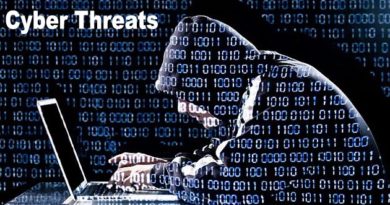Cyber Risk Management: Frameworks and Best Practices
If you think cyber risk only matters to IT teams, think again.
A single phishing email can shut down your operations. A ransomware attack can empty your bank account. A weak vendor system can expose your customer data to hackers.
In today’s digital-first world, cyber risk is business risk—and managing it well is no longer a “tech thing.” It’s a leadership priority.
Let’s explore what cyber risk really means, which frameworks help manage it, and the best practices that smart companies are using right now to stay protected.
What Is Cyber Risk Management?
Cyber risk management is the process of identifying, analyzing, and controlling risks that stem from using digital systems, networks, and data.
It’s about:
- Keeping your systems safe
- Protecting your data
- Preparing for attacks
- Reacting fast when threats occur
- Recovering quickly after damage
The goal? To minimize financial, operational, and reputational losses caused by cyber events.
Why It’s More Important Than Ever
Attacks are rising
From ransomware to credential theft, cybercrime is surging. No industry is immune.
Work from home = more risk
Remote setups often lack enterprise-level protection. One weak endpoint can be the entry point for a breach.
Regulations are tightening
If your cybersecurity isn’t in line with GDPR, HIPAA, or India’s DPDP Act, you’re risking legal trouble and major fines.
Customers trust brands that are secure
Data privacy is now a competitive advantage. Lose trust, and you lose business.
Cybersecurity Frameworks You Can Use
Frameworks help turn good intentions into a real plan. Here are 3 that are beginner-friendly but powerful.
1. NIST Cybersecurity Framework (CSF)
Why it’s useful: It breaks cybersecurity into five clear steps:
- Identify: Know your assets, risks, and who has access
- Protect: Implement firewalls, backups, MFA, etc.
- Detect: Monitor systems and flag unusual activity
- Respond: Have a plan for what to do during an attack
- Recover: Restore operations and learn from what happened
NIST is flexible, widely respected, and updated for new threats (like supply chain attacks and AI misuse).
2. ISO/IEC 27001
Why it’s useful: If you’re a global company or seeking certification, ISO 27001 gives you a full playbook for securing sensitive data.
It’s built around the idea of a continual improvement loop—you assess risks, build controls, test, refine, and grow your security posture over time.
3. CIS Critical Security Controls
Why it’s useful: It’s like a cybersecurity to-do list. There are 18 prioritized actions, starting with:
- Know what devices and software you have
- Configure them securely
- Patch systems regularly
- Set up access control
- Back up everything
Great for companies that need quick wins.
Best Practices to Strengthen Cyber Defenses
No matter which framework you use, these practical steps will help keep your business secure.
1. Train Your Team Like They’re on the Frontline
Most breaches start with a human error—like clicking a bad link.
- Run monthly phishing simulations
- Teach staff to create strong passwords
- Share real-life examples to keep it relevant
- Make cybersecurity a culture, not a checklist
2. Use Multi-Factor Authentication (MFA)
Even if a password is stolen, MFA adds a second lock—like a text code, app approval, or fingerprint. It’s simple and massively effective.
3. Audit Your Systems Regularly
- What’s connected to your network?
- Are outdated apps still installed?
- Do employees have access to more than they need?
Regular IT audits help you close the cracks before attackers find them.
4. Have a Clear Incident Response Plan
Don’t wait for an attack to figure out what to do.
Your plan should include:
- Who’s in charge during a cyber event
- How to isolate affected systems
- How and when to notify stakeholders
- Legal and PR response templates
- Steps to prevent repeat attacks
And yes—test it at least twice a year.
5. Monitor and Respond in Real-Time
Use tools like:
- SIEM (Security Information and Event Management): For real-time alerting
- Endpoint Detection and Response (EDR): For deeper endpoint visibility
- Threat Intelligence Feeds: To stay ahead of new attack trends
Early detection = faster recovery.
6. Don’t Forget Third-Party Risk
Your partners and vendors could become your weakest link.
- Ask about their cybersecurity policies
- Include security clauses in contracts
- Review access permissions they have to your systems
- Rotate or audit vendors regularly
Real-World Case Studies
The Ransomware Attack That Shut Down a City
In 2018, Atlanta’s city government was paralyzed for days after a ransomware attack. Court systems, utilities, and payroll were all hit. Total damage? Over $17 million.
Lesson: Lack of preparedness can turn a small breach into a massive disaster.
The Supply Chain Risk That Hit Thousands
In 2020, hackers compromised a single software vendor (SolarWinds). That one breach affected 18,000 clients, including Fortune 500 companies and government agencies.
Lesson: Even if your systems are secure, your vendors’ systems could put you at risk.
Final Thoughts
Cyber risk is now a daily reality—and it’s evolving fast. But with the right frameworks, best practices, and a culture of security, your organization can go from being an easy target to a well-defended fortress.
Don’t wait for a breach to act. Start now. Build smart. Stay safe.
Explore Best Online Courses to Learn Risk Management
If you’re new to risk management or looking to deepen your expertise, there’s no better time to start than now. Learning from industry experts can help you build a strong foundation and gain certifications that set you apart in the job market.
At www.smartonlinecourse.com, in collaboration with the Risk Management Association of India (www.rmaindia.org), you can explore a range of self-paced, affordable online courses designed for both beginners and professionals. These courses are tailored to real-world needs, taught by experts, and designed for flexible learning.
👉 Visit www.smartonlinecourse.com to explore more!
📧 Email: [email protected]
Or WhatsApp us at: 8232083010/9883398055




